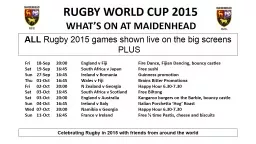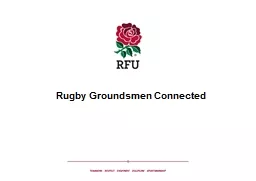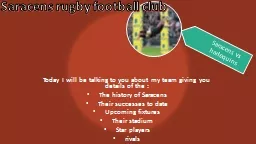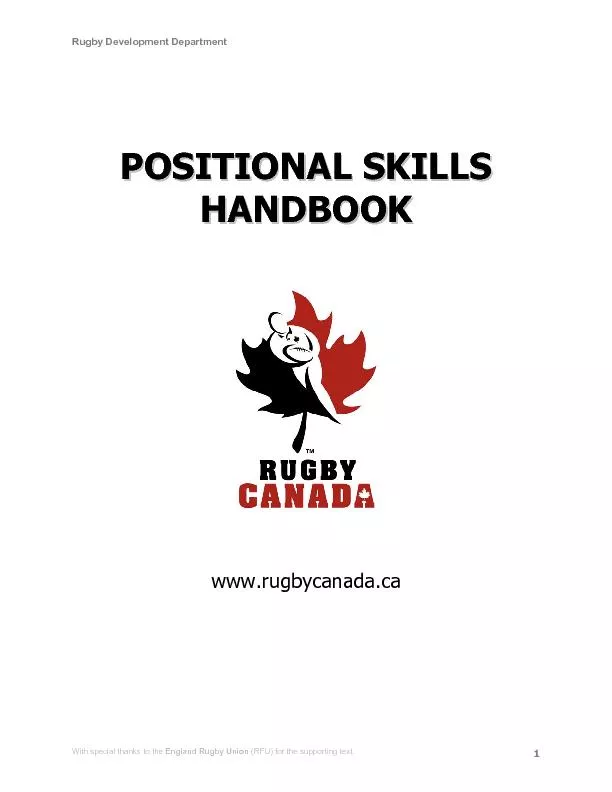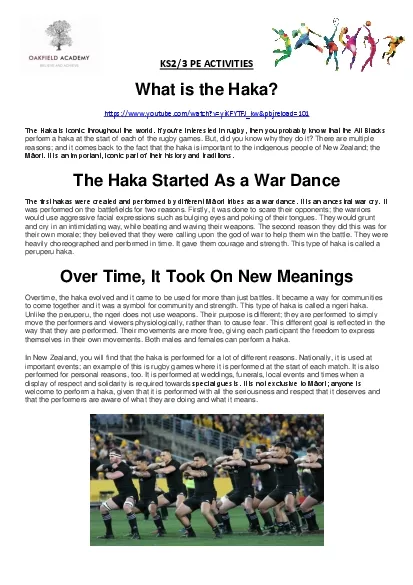PPT-History of rugby
Author : briana-ranney | Published Date : 2017-06-13
Rugby Union actual name or simply rugby is a contact sport which originated in England Story of the origin of rugby 1823 William Webb Ellis a student at Rugby
Presentation Embed Code
Download Presentation
Download Presentation The PPT/PDF document "History of rugby" is the property of its rightful owner. Permission is granted to download and print the materials on this website for personal, non-commercial use only, and to display it on your personal computer provided you do not modify the materials and that you retain all copyright notices contained in the materials. By downloading content from our website, you accept the terms of this agreement.
History of rugby: Transcript
Download Rules Of Document
"History of rugby"The content belongs to its owner. You may download and print it for personal use, without modification, and keep all copyright notices. By downloading, you agree to these terms.
Related Documents


